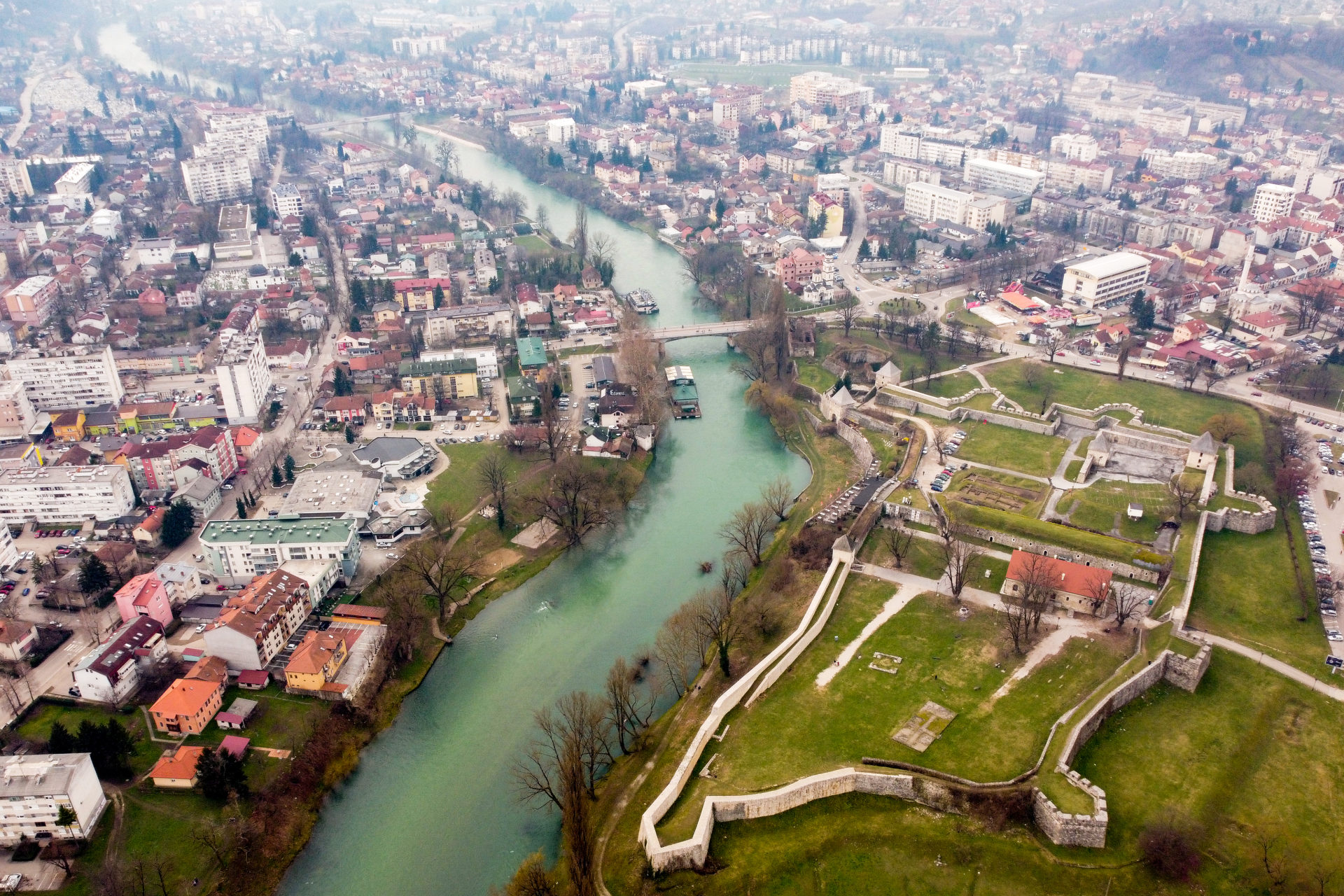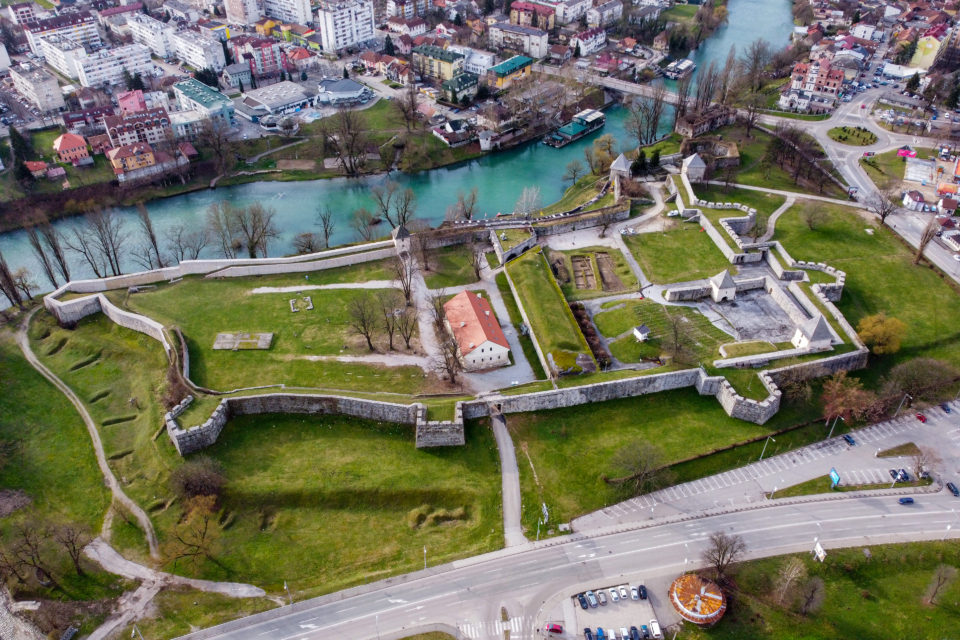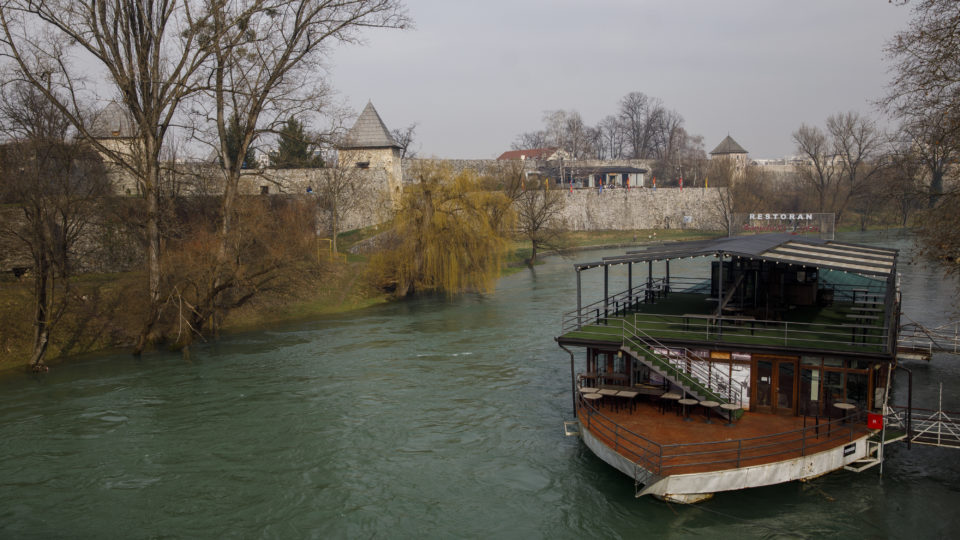
Standing on a small hill along the left bank of the Vrbas, the Kastel Fortress in Banja Luka has always been a suitable strategic point.
Continuous housing and constant construction activity in this area have destroyed traces from earlier periods. Nonetheless, the Kastel site covers an area of 26,610 square meters inside the fortress walls and about 21,390 square meters outside the ramparts.
Since 2004, Kastel has been one of the national monuments of Bosnia and Herzegovina. This includes the fortress, archeological finds deposited in the Museum of the Republika Srpska, and archeological finds located elsewhere in the country in unexplored areas, as well as on the left bank of the Vrbas river below Kastel.
The curator and archaeologist of the Museum of the Republika Srpska, Ivana Pandžić, tells us that the oldest evidence of the existence of a settlement in the area of the Kastel fortress dates back to the Upper Paleolithic, which in this area is the period of the 14th and 13th millennium BC. It was the hunter-gatherer period, before large, permanent settlements began to be built.

“Research has revealed that the site of the fortress was the old Roman settlement of Castro with its road station and military camp. Since this settlement was located on a very important Roman road that connected Split (then Salona) and Gradiška (then Servitium), it shows that Kastel and today’s Banja Luka, even in ancient times, were recognized as an important strategic location,” said Ivana Pandžić.
The construction of the Kastel fortress, as we know it today, is attributed to the Ottomans. They paid particular attention to Banja Luka and Kastel’s great strategic importance. During their rule, Banja Luka was composed of two parts, Gornji and Donji Šeher, and the fact that Banja Luka was chosen as the seat of the Bosnian pashaluq, which was founded in 1580, speaks of the importance of this area for the Ottomans.
The Ottomans Arrive
“All-out construction of the Kastel fortress began in the penultimate decade of the 15th century, during the Turkish occupation and the reign of Ferhat Pasha Sokolović, who in addition to this fortification built other buildings in the Ottoman style. Ten years later, the tophana, or armory, would grow into a real fortified city with towers and bastions,” she says.
Since the fortress is located on two rivers, two bridges were built from the fortress. One stretched across the Vrbas, and the other across the Crkvena river.
“The bridge over the Vrbas has been preserved only in one old engraving. Vrbas and Crkvena were connected by a large moat, so that the fortress was, in fact, a fortified island surrounded by the waters of two rivers. In the walls of the fortress, there was also a large wooden inn overlooking the Vrbas, as well as a series of masonry buildings from the Austro-Hungarian period. The fortress, but also the city of Banja Luka, gained special importance during the Ottoman-Habsburg wars as an important geostrategic center,” says Pandžić.

The Ottomans take the lion’s share of the credit for how the fortress looks today as it was during their reign that Kastel gained its present form, and it is one that has lasted for centuries.
“During its reconstruction during the reign of Numan-pasha Ćuprilić in 1712-1714, the fortress got its final outline. From an anonymous description, written around 1785, there were 50 cannons in the fortress. The last repair of the fortress was in 1868. With the Austrian occupation, there was one battalion in the fortress. After World War II, until 1959, the Kastel Fortress continued to serve military purposes. From the 1960s onwards, the Kastel area was used for various purposes,” emphasizes Pandžić.
After the cessation of its use for military purposes in the 1960s, the Kastel fortress became the responsibility of the city administration of Banja Luka. In its hands, Kastel has become a venue for numerous events in the city. An opportunity for more detailed archaeological research has been created as well.
Tragic Love and the Heart of Stone
There are two legends connected to Banja Luka and the Kastel fortress. Both speak of unhappy love between two young people. The first version of this legend dates back to the 16th and 17th centuries. According to it, Safikada was a beautiful granddaughter of the famous Ferhat Pasha Sokolović, known throughout the region for her beauty. At that time, girls born into rich families had their future secured because their parents could choose the best of all suitors for them.

However, on one occasion, the young Safikada noticed one of the vizier’s soldiers who served at the Kastel. It was love at first sight, so strong that the two dared to go against all the rules and customs of the time. They met secretly to declare eternal love to each other, and when it became inevitable that Safikada’s parents would soon choose her future husband, they decided to flee. Their plans were disrupted by him being sent to the front. Shortly after his departure, news reached Safikada that broke her heart. Her soldier had died. Not wanting to spend the rest of her life with someone of her parents’ choosing, she decided to kill herself. Dressed in a wedding dress, she stood in front of cannon at the Kastel, whose blast was about to mark noon. Her last words were “I will be faithful to you”.
The second story, though different in some details, is equally touching and sad. It places Safikada’s destiny in the 19th century, when Austro-Hungarian soldiers had barracks on Kastel. She was the daughter of a prominent Banja Luka merchant, known for her beauty far beyond Banja Luka. As in the previous story, her life was predestined.
Safikada noticed one Austro-Hungarian soldier while walking around Kastel, and two of them fell in love at first sight. It was unthinkable for a Muslim family at that time to allow their daughter to marry a non-Muslim. The girls were not allowed to move unaccompanied at that time, so Safikada and her soldier saw each other secretly, most often when he was on guard. As in the previous story, Safikada and her beloved had decided to flee, which was prevented by him going to the front. When the news of his death reached Safikada, she decided to keep her vow of eternal love and went to her death by disobeying the order of the Austro-Hungarian soldier not to approach Kastel. After she continued to walk towards it, the soldier shot and killed her at the exact spot of her and her lover’s secret meeting place, thus making her a symbol of eternal love.
Safikada’s grave is located in the immediate vicinity of Kastel, more precisely between the fortress and the Faculty of Electrical Engineering, where, according to the first legend, her body fell after being shot by the cannon. For years, this place has been a shrine to love, where citizens light candles and pray for happiness in love. Thus, Banja Luka’s heart of stone hides a touching and tragic side too, a monument to undying love.
This article was initially published within the first edition of MIR Magazine. MIR, which means ‘peace’ in Bosnian is an annual publication and platform for young inventive people developed by the Post-Conflict Research Center and Balkan Diskurs. It is dedicated to individuals and organizations that left us a legacy of strongly built foundations to continue our fight for peace and justice.






